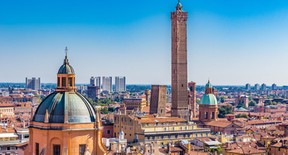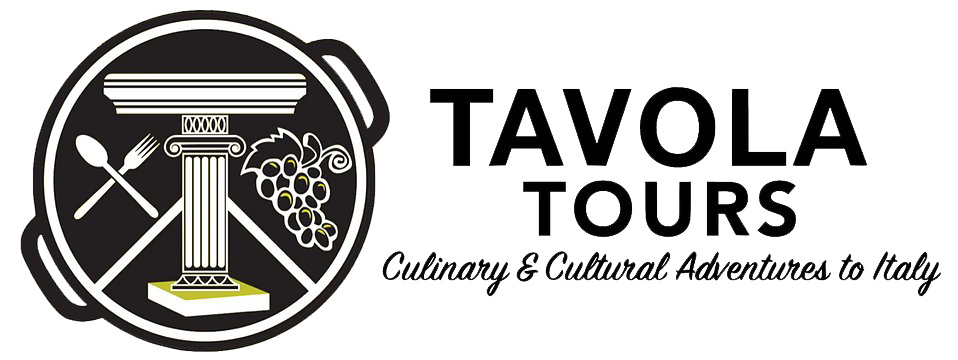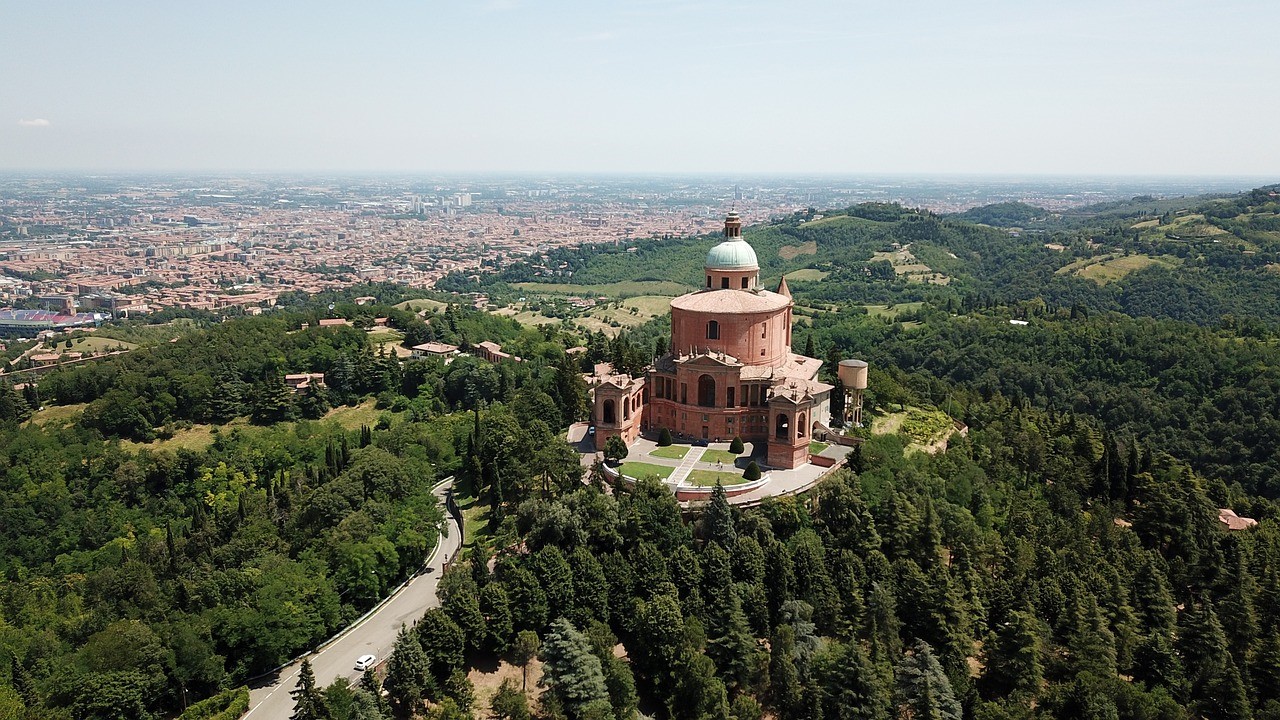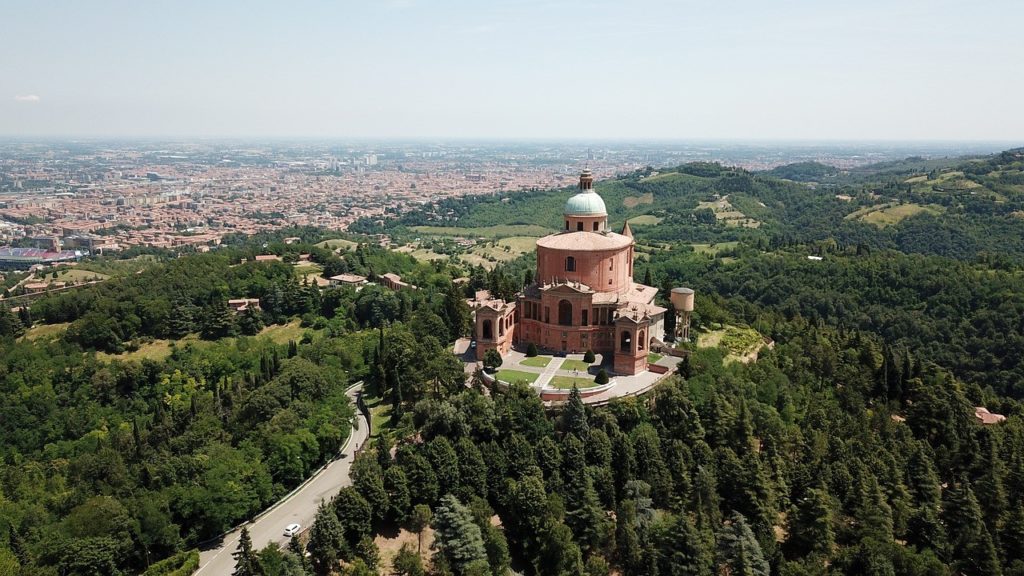
Bologna is a hidden gem amongst more popular Italian cities like Rome and Venice. It is known for its rich medieval history, its excellence in art, architecture, and culinary arts makes Bologna the historic capital of the Emilia Romagna region. If you look at a map of Bologna you’ll see that it’s right in the middle of the Emilia Romagna region. The historic city can trace its roots back to the Bronze Age. Furthermore, in the 6th century, Bologna was known as Felsina, one of the Po Valley’s most important settlements. It eventually fell to the Romans, who named it Bononia, and then to Napoleon Bonaparte.
The city has changed hands through the years and was even bombed heavily in the second Second World War, but it still remains one of the most important centers of culture and learning in the world today. Bologna has many nicknames to describe its rich history. The city is known as “La Dotta, La Grassa, and La Rossa,” which roughly translates to “The Learned, The Fat, and The Red.” These serve to highlight the historic University of Bologna, the city’s reputation as a haven for foodies and its anti-fascist views during the Second World War.
University of Bologna
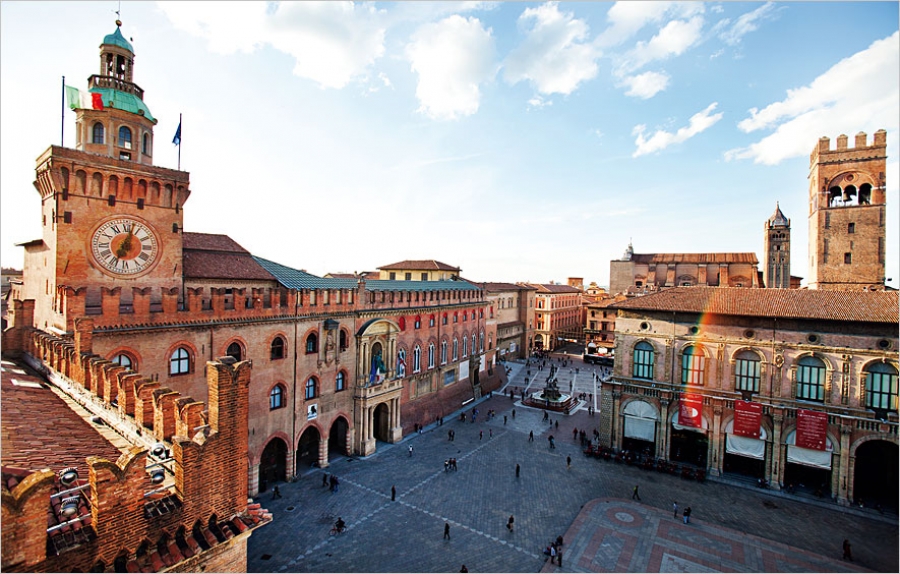
If you mention Bologna, Italy, the University of Bologna is sure to come up in the conversation. The University is amazingly the oldest university in Europe and one of the oldest in the Western world. It was founded back in 1088. The university is known for its student-centered approach, five campuses, and hundreds of unique degree programs. In many ways, the University of Bologna anchors the city. Of its 390,000 population, Bologna hosts over 100,000 student residents, more than a quarter of the entire population. For those fortunate enough to visit Bologna, checking out this historic university is a must.
Stunning Architecture and Must-See Sights
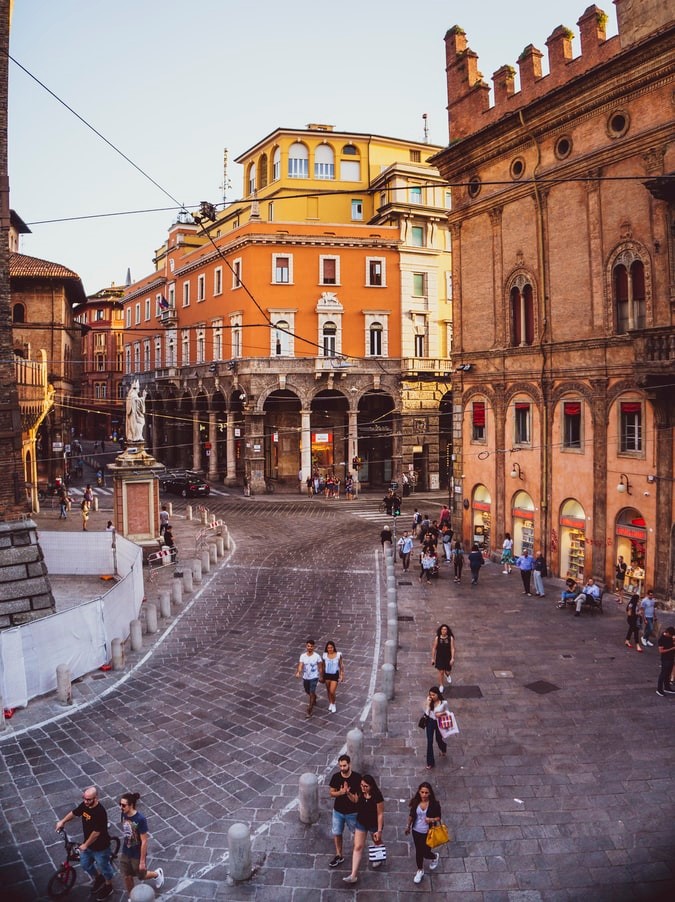
The historic area of Bologna 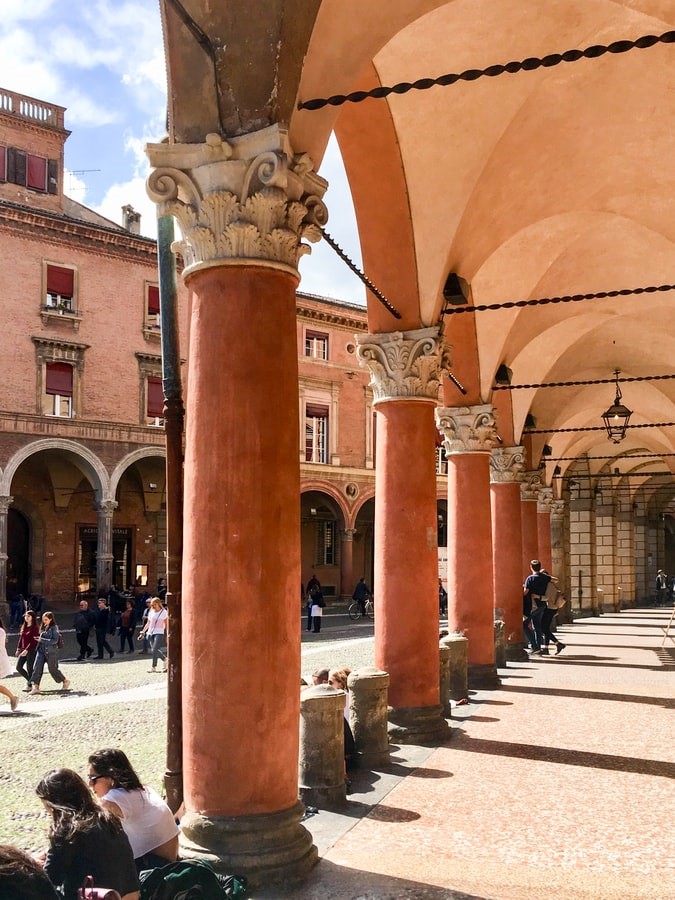
The Porticoes of Bologna,
Visitors can also explore the porticoes of Bologna, which are known for their artistic and cultural significance. In fact, Bologna has the most porticoes of any city in the world, and the porticoes of Bologna have been declared a UNESCO World Heritage Site in 2021. Altogether, they cover more than 24 miles (38 km). If those outside the city walls are counted, they cover more than 33 miles (53 km). Also, we all know about the Leaning Tower of Pisa: it’s the most widely known leaning tower in the world. However, it’s not the only famous leaning tower that Italy offers since Bologna is known for the Asinelli and Garisenda towers which also lean.
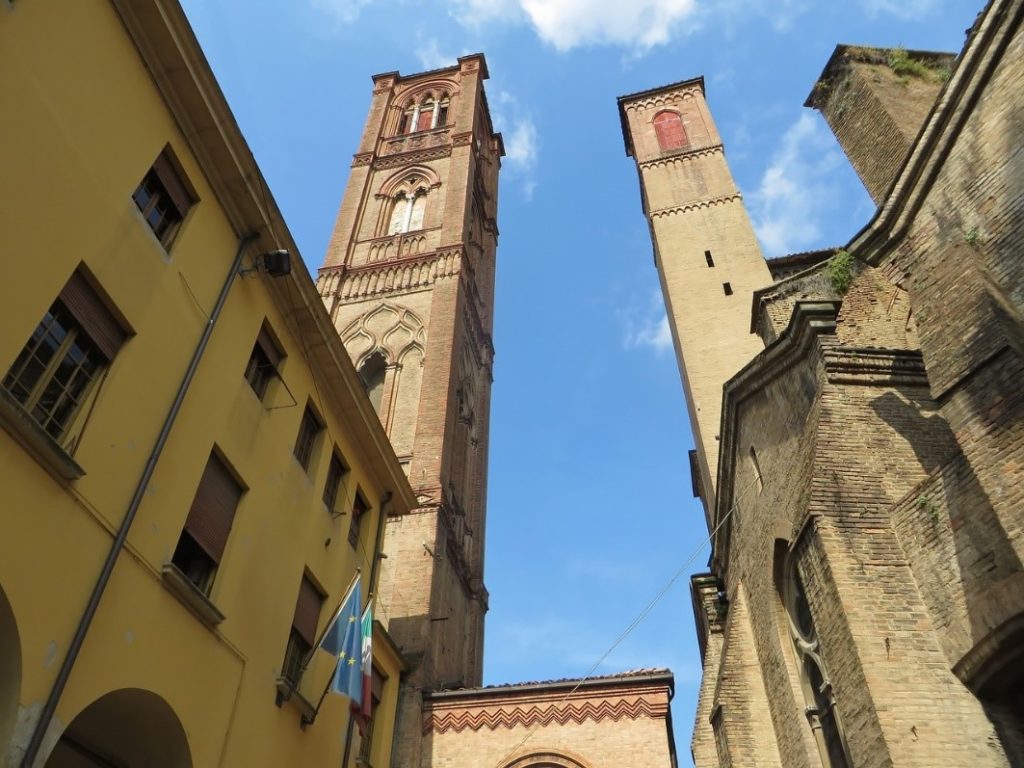
These towers were built during the Middle Ages (between 1109 and 1119) for signaling and the defense of the city. The Two Towers or “Le due Torri” are tall watchtowers and built at a significant tilt due to a yielding of the ground beneath them. The taller tower is called Asinelli, and the shorter but more tilted one is known as the Garisenda. Because of how tall and impressive they are, they also resemble the power of the families who built them. Rumor has it that there was a fierce competition between the two noble families to show which was more powerful – something straight out of a period drama.
Once upon a time, there were about 200 towers in this wonderful city of, and Bologna was even known as the Turrita, a phrase translating to “full of towers.” Only 20 towers remain today, with the Two Towers symbolizing the city’s glorious past. Unfortunately, while the Garisenda Tower isn’t open to the public (its great tilt makes it somewhat dangerous to climb!), visitors should definitely climb to the top of the Asinelli Tower and take advantage of the breathtaking panoramic views of the Bologna cityscape. Visitors will have to conquer 496 wooden steps, and although the experience is tiring, we can confirm that the view from the top is definitely worth the effort!
Bologna: Italy’s Food Capital
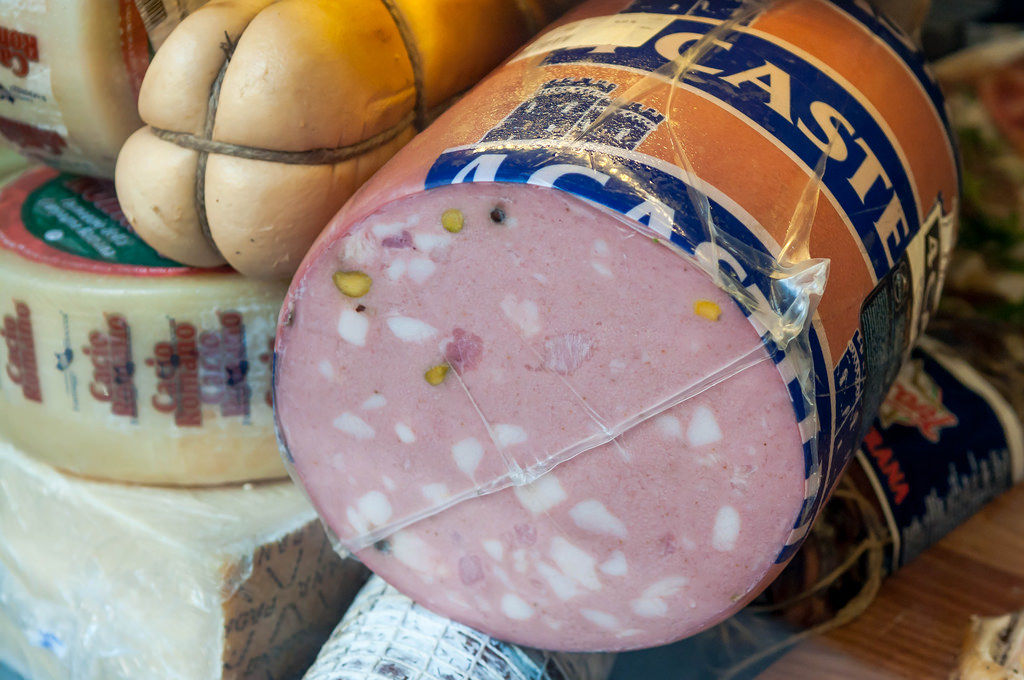
Bologna is often called Italy’s food capital because of the unique culinary experience that visitors can expect. Tourists often wonder, “What is Bologna, Italy known for?” and one of the main answers to this is Bologna’s reputation as a great gastronomic center. It’s known for tagliatelle, tortellini, and countless other kinds of pasta. Tagliatelle al ragu (meat sauce) is a classic (and delicious!) Bolognese dish known all over the world as tagliatelle alla Bolognese. If pasta isn’t enough to entice you, Bologna is also known for its hundreds of specialty cured meats (one of the most famous is mortadella), prosciutto, and its prized Parmigiano Reggiano cheese.
Foodies and non-foodies alike insist that visiting the food shops in the Quadrilatero district is a must when visiting Bologna. Another great experience is visiting FICO Eataly World, a food-centric theme park on
the outskirts of Bologna with its very own wine street. This should spark up your hunger and local wine curiosity when in town.
A Center of Music and Art
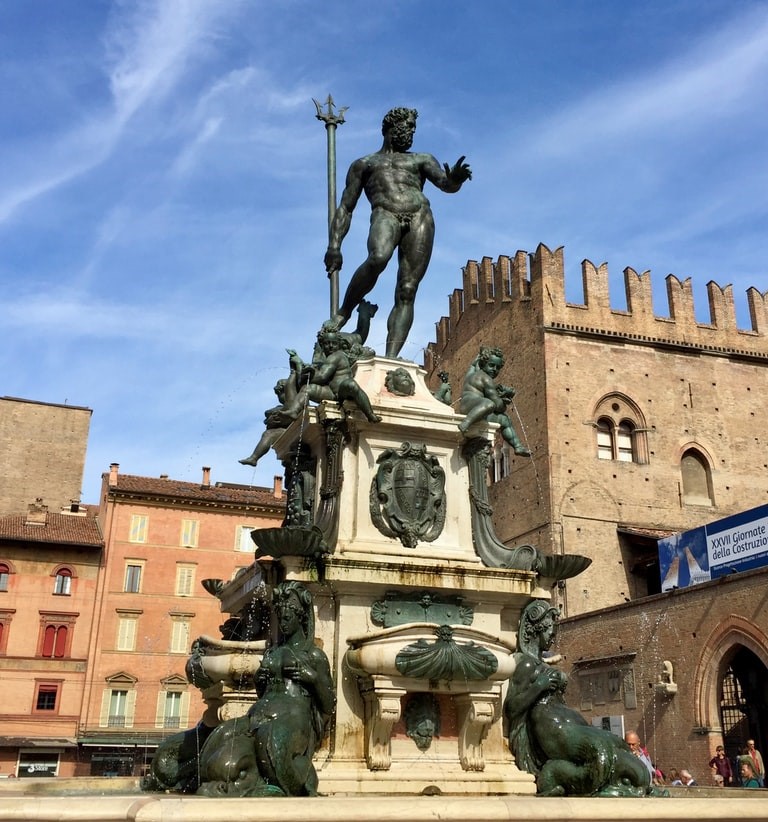
Bologna is also famous for its amazing music and art. In 2006, Bologna became a UNESCO Creative City of Music. The city has a rich music tradition and boasts institutions such as the Teatro Comunale (the City Opera House), the Conservatorio, and the International Museum and Library of Music. The renowned University of Bologna was the first university in Italy to offer a degree in music, art, and the performing arts. Wolfgang Mozart studied in the city when he was a teenager. The city greatly promotes the music sector and fine arts of the area. There are a number of international festivals held in the city every year to celebrate the fine arts and music scene.
Additionally this once medieval is now known all over the world for its beautiful art, with the fourteenth and seventeenth centuries being amongst the golden years of Bolognese art. There’s a reason that artists and writers like Goethe, Fuseli, and Stendhal were all attracted to this city. With elaborate statues like the famous Fountain of Neptune, the Archiginnasio Anatomical Theater, and the National Gallery full of priceless works by Raphael, Tintoretto, and Perugino. Bologna is sure to impress even the most well-learned history buffs and art fans.
A Place Worth Visiting
Our next adventure is to the Emilia-Romagna region which Bologna is the region’s capital city. This area of Emilia-Romagna is known as the “breadbasket” of Italy. On your tour, Bologna will be a home base for half of the journey. This autumn adventure will take place at a perfect time of the year to enjoy the bountiful fall harvest from this great agricultural region. The trip will take place from October 31st to November 8th. There is also an extension tour. Please send your questions to info@tavolatours.com or you can send comments through our contact submission page. We look forward to hearing from you soon to discuss this next great Italian adventure. Also, please visit our Facebook page for tour updates and Italian travel inspiration.
Whether you’re visiting Bologna because of its reputation as Italy’s gastronomic capital, its beautiful art, or its medieval architecture, the city has something to offer everyone. Book your trip now with Tavola Tours and revel in the renowned porticoes, the mouthwatering culinary delights, and all the other glistening treasures that this hidden gem has to offer!
